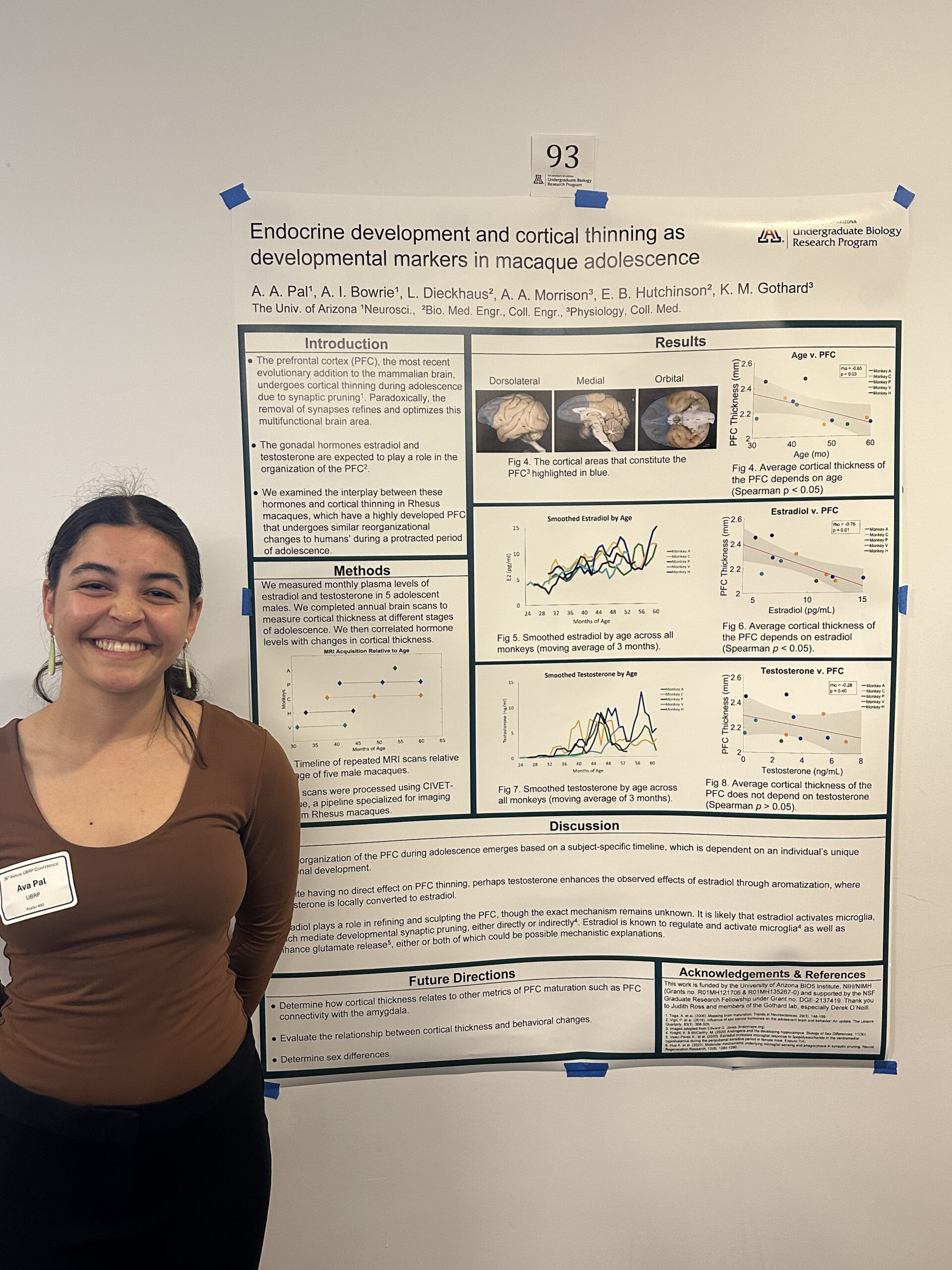All the Monkey Business
On a cloudy Saturday in January 2025 a collection of minds converged to talk science, specifically of the biological variety. It was the 36th Annual Undergraduate Biological Research Program’s (UBRP) poster conference, and Gothard lab members past and present descended upon ENR2 to support undergraduate research.
There were two representatives from the Gothard lab presenting this year, Ava Pal and Gabriel Neal. Both joined the lab in 2023, and were accepted into UBRP in 2024 to undergo the intensive experience of what it would be like to work full-time in research over 10 weeks of summer.

Ava, a junior in the Neuroscience and Cognitive Science (NSCS) major, had a project focused on the changes that occur in the adolescent brain as seen on MRIs, with a particular focus on the prefrontal cortex. In conjunction with MRIs, she also evaluated a cohort of monkey’s development over adolescence as measured by the gonadal hormones, estradiol and testosterone. Ava’s work uncovered a strong relationship between estradiol and the thinning of the cortex, better predicting the amount of thinning than age, while testosterone had no clear relationship. The process behind these connections between hormones and cortex thinning could be due to the process of aromatization, which the lab will continue to evaluate.
Ava is continuing in UBRP with a new project studying how a monkey’s behavior may predict choices on an approach-avoidance task and how this relates to their neural and bodily states.

Gabe, a senior in the NSCS major, is one of the few people in the world that can say he pets a monkey on the regular. In his interest in uncovering the connection between the brain and body, and how we can affect interoceptive signals from the body to make changes in the brain, Gabe used a pharmacological manipulation of a tactile experiment. While alternating between puffs of innocuous air or grooming by a trusted human trainer, the monkey was provided a drug that elevated heart rate without crossing the blood-brain barrier. Gabe found that the firing rate of the somatosensory cortex and the amygdala each had a proportion of cells that had baseline firing rate changes related to changes in heart rate. Despite these changes to baseline, there seemed to be no significant effect on the actual response to stimuli.
Gabe is currently attending interviews for graduate school to continue his research as a PhD student. Until he leaves the lab, he will continue to work on the interoceptive project and petting monkeys.